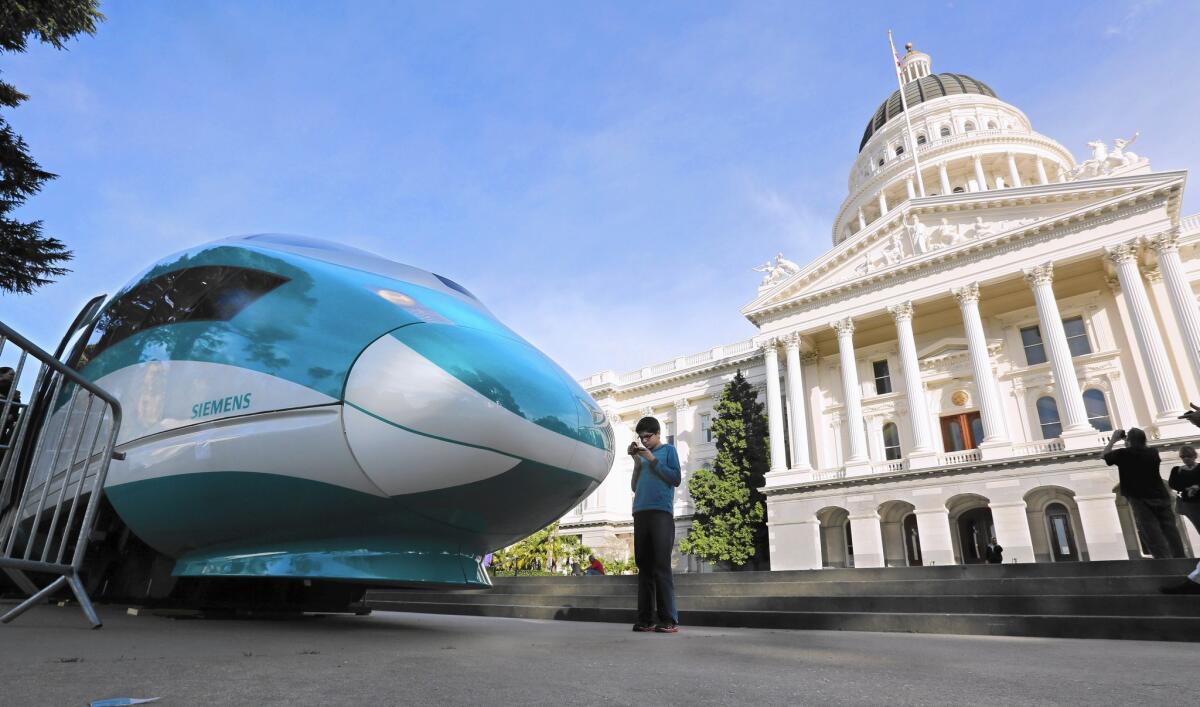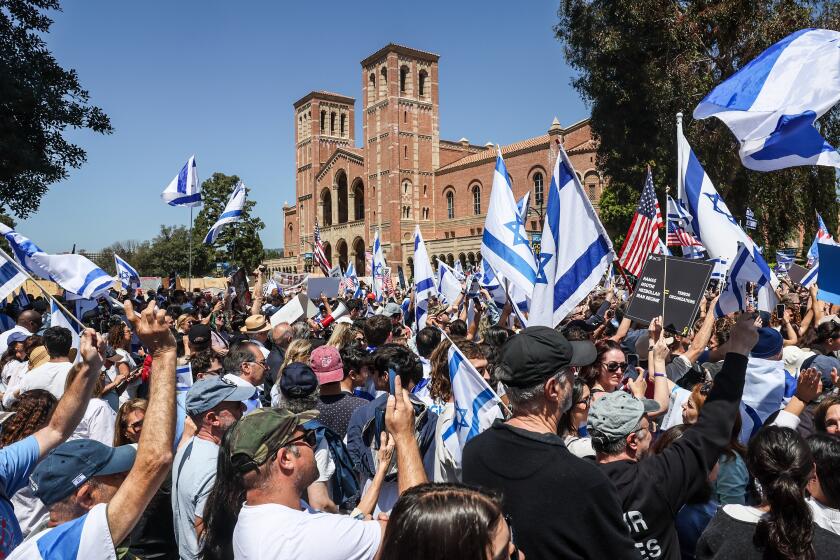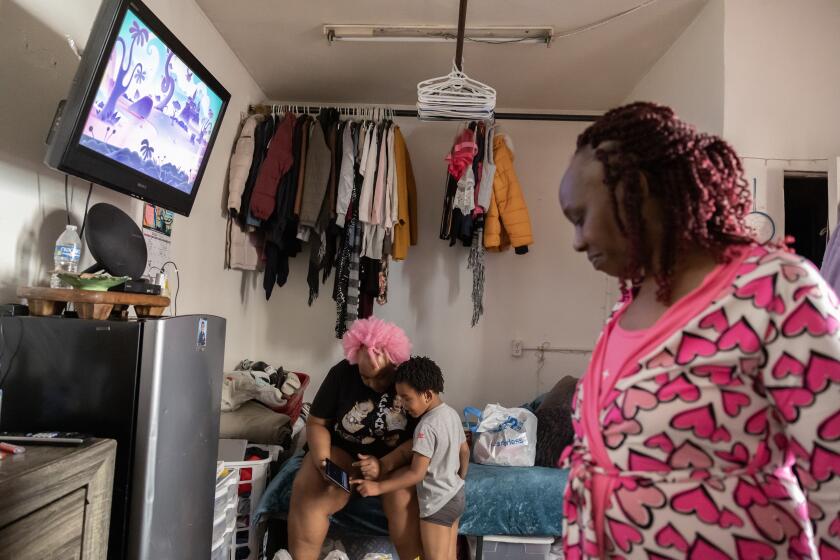State has funds to build first segment of bullet train, legislative analyst finds

The state has enough money to build an initial operating segment of the bullet train from San Jose to the Central Valley but faces major uncertainties about funding for the entire 500-mile system and whether the initial system will be profitable, according to a new report by researchers for the Legislature.
The California High Speed Rail Authority has identified the source of the $21 billion it says it needs for the first segment, said the report by the Legislative Analyst’s Office. But the project is $43.5 billion short of the total needed for the entire $64-billion, 500-mile link from San Francisco to Southern California, the report said.
The analysis was conducted on the rail authority’s revised business plan, which was released last month. Under the 2016 plan, the state would tap existing federal grants, the sale of bonds approved by voters in 2008 and greenhouse gas fees to build the $21-billion initial segment.
But funding for the rest of the project is unidentified, the report said.
Analysts noted that the use of greenhouse gas fees would extend only until 2020, when the fund-generating program is set to expire. The fees this year are providing an estimated $600 million for the project, and the rail authority ultimately wants approval to borrow against future fees.
The report also noted that state law will allocate an additional $400 million from the greenhouse gas fees that the Legislature previously borrowed for the general fund.
The rail authority’s business plan says private investors will eventually help fund additional construction for the full system, based on future profits from operating a partial segment. But legislative analysts raised concerns about that projection, saying “it is unclear whether the system will actually generate an operating surplus.”
Even with private funding the project would be “significantly short of the level needed” to complete the San Francisco-Southern California system,” analysts said. The plan “does not identify how this shortfall would be met,” they said.
The report also warned that the southern terminus of the initial segment would be north of Bakersfield in what is now an agricultural field.
“Even with a temporary station or platform, ending the [initial operating segment] in an unpopulated agricultural area does not appear to be an effective approach,” the report said. “This is because this location would not have the types of facilities and nearby businesses, such as transit connections, rental car facilities and shops necessary to meet the needs of train passengers.”
Still, the report said current plans to build an initial segment from San Jose to the Central Valley, rather than from Burbank to the Central Valley under previous business plans, has “merit” and faces “less risk” because it would fit within its existing funding and be less technically difficult because it avoids crossing the mountains north of Los Angeles.
In a response to the report, the rail authority did not address specific issues but said: “The LAO report finds merit in the Central Valley to Silicon Valley segment proposed in the 2016 Draft Business Plan. We remain committed to moving forward with this project to create jobs, improve air quality and better connect California’s communities.”
Twitter: rvartabedian@
ALSO
Lufthansa jet and drone nearly collide near LAX
Death of high-rise worker in downtown L.A. investigated as possible suicide
MTA unveils ambitious $120-billion plan to expand mass transit in Los Angeles
More to Read
Start your day right
Sign up for Essential California for news, features and recommendations from the L.A. Times and beyond in your inbox six days a week.
You may occasionally receive promotional content from the Los Angeles Times.






